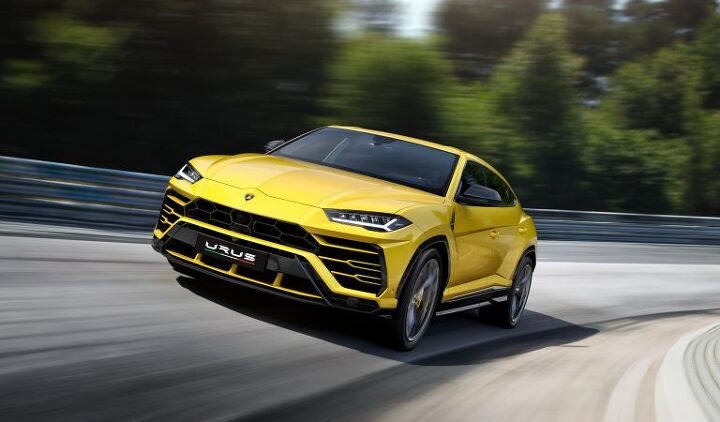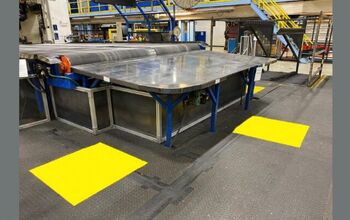Lamborgreeni: Italian Automaker to Become Electric Only by 2024

Lamborghini CEO Stephan Winkelmann announced on Tuesday that the Italo-German supercar brand will officially be transitioning to electric vehicles, with the last traditional internal combustion model coming before 2024.
But these kinds of proclamations rarely adhere to observable reality, otherwise, we’d all be riding around in flying cars that can navigate autonomously. What Lamborghini is really promising is an intent to abandon models that rely exclusively on combustible fuels while it builds a bunch of them in the interim. It’s kind of like saying you’re going on a diet next month and gorging yourself on chocolate cake as you brag to your friends about how healthy you’re about to become.
Most manufacturers have been walking an identical path, with the term EV being used interchangeably with PHEV. As far as the world of automotive marketing is concerned, plug-in hybrids should be considered fully-fledged electric vehicles. But it’s strange that Lamborghini is bent on slashing emissions by 50 percent by 2025 (it’s stated goal) when it provides a minuscule number of automobiles to wealthy people whose lifestyles probably create more unnecessary pollution in a year than anyone reading this could manage in their lifetime. Studies from Oxfam and the Stockholm Environment Institute have even estimated that (between 1995 and 2015) that the top 1 percent of earners were already responsible for twice the amount of emissions as the bottom half of the world put together. While we don’t begrudge anyone a private jet, the reality is that Lambo EVs are largely symbolic unless we’re talking about possible performance advantages.
Some of the best modern supercars have had some form of electric assist and Lamborghini will undoubtedly be trying to make hybridization enhance vehicle dynamics before fretting over whether or not it’s eco friendly. They just won’t be shouting that in any interviews.
But what does this look like for the lineup? While the official announcement was brief, Winkelmann spoke with Car & Driver to provide some additional details about how this would reshape the brand. The Huracán will be abandoning the V10 for a twin-turbo V8 with some amount of hybridization, possibly with an electric motor at the front axle.
The Urus will also become a hybrid. Since Lamborghinis are now badge-engineered VW products, look to the Cayenne Turbo S E-Hybrid for inspiration. On the upside, the current model’s 670 combined horsepower and 633 lb-ft of torque ought to make it the most exciting crossover in history. Because there’s absolutely no chance that the Lamborghini hybrid will debut with less power.
That just leaves the Aventador, as we know the supercapacitor-equipped Sián wasn’t ever going to be more than a flashy, limited edition showpiece. Though we hope the $3-millon bauble inspires Lamborghini’s future design choices. The Sián, along with the Terzo Millennio (below), represent some of the coolest and most forward-thinking automotive designs we’ve seen from any manufacturer. They make the Huracán look like a mid-90s Toyota Corolla.
Oh, that’s right, I was talking about the Aventador. Its successor is supposed to keep the V12 but with some hybrid enhancements, which is old news.
There will be a new addition to the lineup. Sometime between now and eventually (after 2025), Lamborghini plans on introducing a totally electric vehicle. That means no internal combustion engine whatsoever. Our guess is that it’s going to have a lot in common with the Porsche Taycan, though we’ve heard literally nothing other than what Lamborghini has told us.
“We want to have a new model line in the second half of this decade,” Winkelmann explained. “It cannot cannibalize what we have today, but my dream is to have the best of two worlds, to try to have a car which is a four-seater two-door like the GT cars of the Fifties and Sixties.”
[Image: Huang Zixing/Shutterstock, Lamborghini]

A staunch consumer advocate tracking industry trends and regulation. Before joining TTAC, Matt spent a decade working for marketing and research firms based in NYC. Clients included several of the world’s largest automakers, global tire brands, and aftermarket part suppliers. Dissatisfied with the corporate world and resentful of having to wear suits everyday, he pivoted to writing about cars. Since then, that man has become an ardent supporter of the right-to-repair movement, been interviewed on the auto industry by national radio broadcasts, driven more rental cars than anyone ever should, participated in amateur rallying events, and received the requisite minimum training as sanctioned by the SCCA. Handy with a wrench, Matt grew up surrounded by Detroit auto workers and managed to get a pizza delivery job before he was legally eligible. He later found himself driving box trucks through Manhattan, guaranteeing future sympathy for actual truckers. He continues to conduct research pertaining to the automotive sector as an independent contractor and has since moved back to his native Michigan, closer to where the cars are born. A contrarian, Matt claims to prefer understeer — stating that front and all-wheel drive vehicles cater best to his driving style.
More by Matt Posky
Latest Car Reviews
Read moreLatest Product Reviews
Read moreRecent Comments
- Dartman https://apnews.com/article/artificial-intelligence-fighter-jets-air-force-6a1100c96a73ca9b7f41cbd6a2753fdaAutonomous/Ai is here now. The question is implementation and acceptance.
- FreedMike If Dodge were smart - and I don't think they are - they'd spend their money refreshing and reworking the Durango (which I think is entering model year 3,221), versus going down the same "stuff 'em full of motor and give 'em cool new paint options" path. That's the approach they used with the Charger and Challenger, and both those models are dead. The Durango is still a strong product in a strong market; why not keep it fresher?
- Bill Wade I was driving a new Subaru a few weeks ago on I-10 near Tucson and it suddenly decided to slam on the brakes from a tumbleweed blowing across the highway. I just about had a heart attack while it nearly threw my mom through the windshield and dumped our grocery bags all over the place. It seems like a bad idea to me, the tech isn't ready.
- FreedMike I don't get the business case for these plug-in hybrid Jeep off roaders. They're a LOT more expensive (almost fourteen grand for the four-door Wrangler) and still get lousy MPG. They're certainly quick, but the last thing the Wrangler - one of the most obtuse-handling vehicles you can buy - needs is MOOOAAAARRRR POWER. In my neck of the woods, where off-road vehicles are big, the only 4Xe models I see of the wrangler wear fleet (rental) plates. What's the point? Wrangler sales have taken a massive plunge the last few years - why doesn't Jeep focus on affordability and value versus tech that only a very small part of its' buyer base would appreciate?
- Bill Wade I think about my dealer who was clueless about uConnect updates and still can't fix station presets disappearing and the manufacturers want me to trust them and their dealers to address any self driving concerns when they can't fix a simple radio?Right.




































Comments
Join the conversation
Tax people that work from home.
Seems like a good fit for a super car. Pipe in some artificial sound, insane acceleration and range doesn't really matter. A majority of these cars are hardly driven. Load it with tech and folks with money will eat it up.